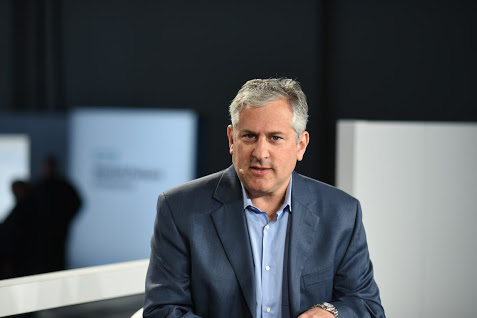 NEWS
NEWS
 NEWS
NEWS
 NEWS
NEWS
You can almost hear the whooshing sound as the technology industry is sprinting to the marketplace with new solutions to help the enterprise garner useful and intelligent insights from their data. Analytics, Machine Learning (ML) and Artificial Intelligence (AI) delivered in a simplistic form is what companies are demanding. To meet this mandate, Hewlett Packard Enterprise Co. (HPE) has developed Haven OnDemand, which offers the latest technology in a simplified platform for developers.
Jeff Veis, VP of Big Data Platform Solutions, HP Software, at HPE, spoke to John Furrier (@furrier) and Dave Vellante (@dvellante), cohosts of theCUBE, from the SiliconANGLE Media team, during HPE Discover 2016 Las Vegas to discuss Big Data and the needs of the enterprise.
Furrier began the interview by asking Veis about the driving force behind the need for machine learning. “
Now that the Big Data has landed and people are trying to figure out: How do I store it and manage it? What am I going to do with it, and at what velocity and to what end? That’s why at this Discover, we really need a big bat across the company and shiny neon lights around what we are referring to as applied to machine learning,” Veis said. “And it’s not an if; it’s a when and how, because there’s no other way to tackle the amount of data hitting organizations.”
He also explained that AI and machine learning is not new. He noted that it is a proven technology that has been around for years. He does describe the change to the technology as pretty profound.
“In that the technology itself, the computational assets that you can put at it and the ability to make it accessible, so it’s not just for the few but for the many,” Veis explained. “We are really taking ML and AI and making it for the developer. It’s not that the data scientist is still not key, but it’s now about going from fine china to everyday ware.”
Fundamentally, Veis believes that as companies gather more data, they have to be able to learn and act on it, commenting that if they don’t, their competition will.
“It is about speed and scale, which has always been the challenge; but now it’s speed scale and intelligence. And these new forms of data the structure forms are where you need the computers to do some of the lifting for you. It’s not about replacing the human but augmenting the intelligence that is there,” he said.
The breakthrough for HPE is Haven OnDemand, but Veis said that all these technologies are not for the faint of heart. He clarified that there are significant investments, expertise and costs that come with developing this technology.
“That’s why it’s not prevalent. We are creating a cloud-based, accessible API that any developer can now do face detection … do speech to text … do pattern recognition that allows you to take this into any app, and that was something that before Haven OnDemand simply didn’t exist. I think it’s going to reset the bar,” Veis said.
When talking about data past and present, Veis has some strong opinions. He claimed that in the past data was effectively dark and locked up, and you needed to have a really good reason to access it. Today data is driving business, and the demand for access overrides the old way of thinking. “Let the people have the goddamn data!” he exclaimed.
If organizations want to be data driven, they need to provide access, reliable data that people can react to in a timely manner, he added. Historical data can be useful, but most businesses today need quick access. Now the tools are out there to make this easier.
Veis believes that data should be accessible when it is needed and organizations should be able to deliver data and then store it on demand.
Describing how data should be accessed and distributed across an organization, Furrier remarked that his vision sounds like “composable infrastructure meets composable data.”
“The word I am going to throw in there is temporal, that is the word of the day, temporal. The idea is can I do this in a temporal fashion so that I get what I need when I need it with very little friction or cost up or very little friction or cost down,” Veis explained.
Watch the full interview below, and be sure to check out more of SiliconANGLE and theCUBE’s coverage of HPE Discover 2016.
THANK YOU